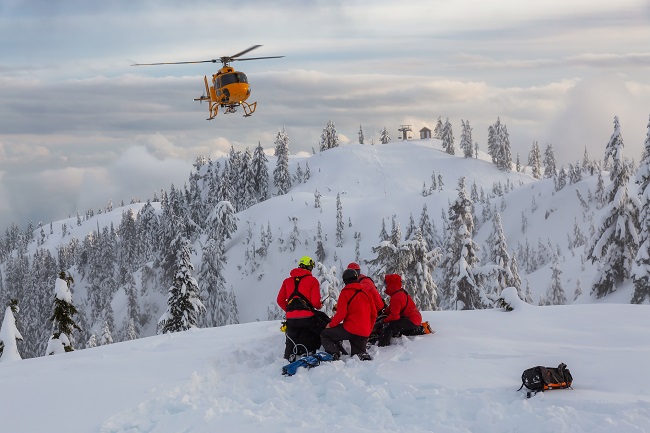
EMT Training and the Evolution of Rescue
BY ISAIAH FRIZZELL
The Ski & Mountain Trauma Conference (SMTC), put on by St. Alphonsus, just celebrated its 16th Anniversary at the Sun Valley Resort. From November 1st – 3rd, the helping hands of the community linked up to learn fresh takes on high stakes rescue missions.
Rescue is as ancient as accidents but the thought process surrounding trauma has evolved to encompass more than just mending a bone or checking vitals. At the SMTC, volunteers were immersed in 41 sessions and 16 lectures in just 3 days. The sessions were on topics such as How Visual Tracking Benefits BackCountry Search and Rescue, Sexy Airway Secrets, Hey Girlfriend, What’s in Your Pack, Stop the Bleeding and The Impaled Skier.
While these sound almost like ‘too late for Halloween’ Netflix episodes they’re deadly serious. Many of the courses, perhaps the most critical such as Performance Training and Injury Prevention for the Tactical Athlete, were repeated for an ‘in case you missed it’ backup plan. And that’s what this is all about, back up plans. These community servants above all must maintain themselves as they navigate an inhospitable terrain to assist in malfunctions of equipment or perception on the part of the snowy mountain recreationalists.
It takes a caring heart and open mind to risk personal safety for the benefit of others. How do you prepare yourself, even if you’re a ski enthusiast, to navigate an icy pass with gear and a moaning, downed hiker waiting, embroiled in physical and mental trauma? Every year you go back to school.
Just like at college, EMT’s need to log hours to become certified. This is a chance to build confidence in their mental, muscle and empathic memory so they may offer their rescue services legally and with procedural and emotional accuracy. Emotional. There is more to trauma than just the physical.
In the visceral, visual wonderland of winter backcountry, while the glory and excitement of the terrain stimulate, there is a gradient of emotional responses that must be considered. Over time and as nutrients and hydration change so does the mind-body communication. A hiker may begin longing for more or becoming agitated. This is generally the time to consider bedding down or turning around and along with changes in reaction time and accuracy of motility can lead to accidents. The mindset may or not be recognized but if this occurs and an accident happens there are now a multiplicity of emotional reactions taking place which can be confusing to the enthusiast.
If physical trauma takes place, and this could be a sprained ankle, torn flesh, a broken bone, or simply being stuck and unable to remove oneself from the environment – a different type of trauma, an emotional state, can set in. This is the type of intangible trauma an EMT or rescuer must learn to ameliorate. Calmness of approach and voice, learned accuracy of the tools and techniques to quickly address the situation and tact in maneuvering the mission are of utmost importance. SMTC lectures such as Resiliency for First Responders: Development of an Effective Stress Management Toolkit and Toxidromes and the Pitfalls of Recreating in Altered States of Consciousness shed light on perhaps unexpected avenues in the rescue game. Who would think someone might have a few beers before skiing or go hiking while depressed? The EMTs.
The keynote presentation at SMTC was by Tom Marshburn, MD. Tom is lauded as a former astronaut and presented on Extreme Medicine: Lessons from an Orbital Outpost. What might the environment of space share with the environment of the winter backcountry?
The use of new and emerging technology is a guarantee. Fitbits, satellite phones, drones, FLIR cameras, these are all part of the effort. While the EMTs used virtual reality at this year’s conference to model a mission in a classroom, will we soon see alternative reality and AI helping diagnostics and treatment in the field?
Sun Valley sets a standard for community awareness and contribution to safety and lifestyle at the SMTC. The community mindset is up front and present when it comes to attending to the ideals and realities of a resort town and these essential services. When people come together for a common cause they can do anything.
The Red Cross or Wood River Fire and Rescue are great places to jump in and become EMT certified. Plan ahead, learn your terrain and mark your calendars if you’d like to participate. The 2024 Ski & Mountain Trauma Conference will be held next year from November 6-8..
